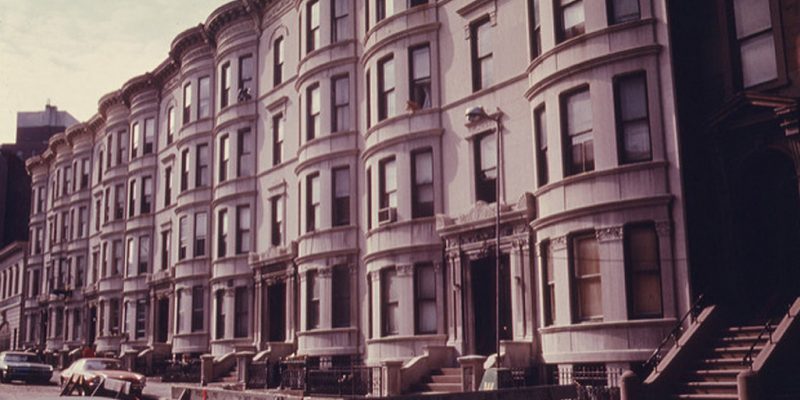The Downfall of the Inner City

Urban decay was front-and-center in early 1970s New York. (photo/ D. Lyon)
By Telling is Telling Staff
July 1, 2021.
Updated January 7, 2025.
Within inner-cities throughout the United States, criminals are idolized, imitated, and memorialized in music, television, literature, and film. There are many reasons why criminals are glorified. Intrigue, suspense, drama, and economics are just a few reasons why. The mainstream examples of success that young people gravitate toward involve athletes, entertainers, and the more accessible figures from the criminal underworld. During segregation, doctors, lawyers, and other successful business people lived right along side the working labor class all in their same urban communities. The houses and specific areas were separate, but the whole community consisted of so-called Negroes. After desegregation, the criteria for being a role model seemed like it became something else. Urban flight happened, and many of the people who remained in inner-city communities were usually affiliated with nightlife and criminality.
Who controls the crime world? There is a fine line that separates the legal and illegal world. Strangely, it is a common fact that law enforcement agencies maintain long-standing relationships with entities involved in drug trafficking and crime. The book, Cocaine Politics: Drugs, Armies, and the CIA in Central America, by Peter Dale Scott and Jonathan Marshall details how, “For the CIA to target international drug networks, it would have to dismantle prime sources of intelligence, political leverage, and indirect financing for its Third World operations.” Many countries are structurally corrupt and apply a value system that is much different from what United States citizens are accustomed to.
Illegal narcotics are synonymous with economics, and the lines that divide the good and bad sides are blurred. Scott and Marshall write how, “Indeed, the long and sordid history of CIA involvement with the Sicilian Mafia, the French Corsican underworld, and heroin producers of Southeast Asian’s Golden Triangle, and marijuana-and cocaine-trafficking Cuban exiles of Miami, and the opium smuggling mujaheddin of Afghanistan simply reinforces the lesson of the Contra period: far from considering drug networks their enemy, U.S. intelligence organizations have made them an essential ally in the covert expansion of American influence abroad.” Some fail to realize that the CIA does not sell drugs, although their allies might be involved.
Gray areas exist, where there is no clear black and white answer. The authors Scott and Marshall further explained that, “Although the CIA did not actually peddle drugs, it did form gray alliances with right-wing gangs deemed helpful against a common enemy.” People growing up in the inner-city do not see the convoluted connection between law enforcement and crime. The argument used to be that people in the inner-city did not furnish the airplanes that smuggle and distributes drugs into inner cities.
The bottom line is that inner-city dwellers accept those narcotics and voluntarily sell them to their own communities. If that is true, inner-city drug dealers must admit that they are the patsies of high level politics. They are victims. The point here is that crime is glorified without recognizing its deeper connection to something significant. There is no reason to tell on anyone. The real message is to avoid criminality at all costs, because of its dark and complex connections. The people who claim to be independent are actually tied to the very people they claim to despise. People say who they can’t work for, but indirectly work for those same types of people.
©Telling is Telling. All Rights Reserved 2025.
